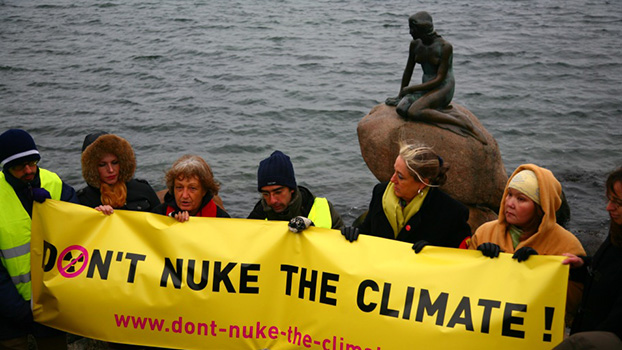
There is a growing consensus on the urgency of ambitious action to mitigate the scale and scope of global warming. This imperative has been elevated by a report issued in October 2018 by the Intergovernmental Panel on Climate Change (IPCC). In short, the global panel of climate scientists has found that the continued addition of greenhouse gases (GHG) must be dramatically reversed by 2030, or else severe climatic changes will “significantly worsen the risks of drought, floods, extreme heat and poverty for hundreds of millions of people.” These trends are expected to increase economic, political, and security risks to even the wealthiest and most powerful nations.
The IPCC report finds that, in order to limit average temperature increases to 1.5°C, global greenhouse gas emissions must be reduced by 45% by 2030, and reach net zero by 2050. The report also shows that achieving those targets is still feasible and affordable, but ambitious, sustained action is needed. Fossil fuels constitute about 85% of total energy use, both worldwide and in the U.S. Decarbonization, then, requires replacing the vast majority of our current energy sources within 30 years or so. As one news report aptly summarized: “The details in the report are worth understanding, but there’s one simple critical takeaway point: we need to cut carbon pollution as much as possible, as fast as possible.” In that light, one of the essential questions is what actions we need to take in order to phase out the use of fossil fuels that quickly as well as what it will take to make that happen. It is not enough to say that we have to pursue every low-carbon technology. The resources to achieve decarbonization are available—including time and money—but they are not unlimited. Time is short and solutions need to be as cost-effective as possible to ensure there is enough finance/capital. At the same time, because of the advance of climate change, ecosystems and vital resources, such as drinking water, biodiversity, arable land, fisheries, etc., are increasingly under stress and must be protected. Strategies to reduce emissions have to be rapid, affordable, dependable, compatible, and sustainable. In short, we cannot afford to waste time, money, resources, and political will on technologies and policies that impede the pace of decarbonization, involve significant uncertainties, or further compromise the natural environment.
This short report presents an overview of the very real and practical reasons why nuclear power is not going to be a viable tool in the climate solutions toolbox, and why states and nations shold plan on nuclear-free paths to decarbonization. Rather than looking at the question through the abstract lenses of emissions and energy resource mix modeling, it is important to understand the real-world trends and conditions of this technology in particular. Nuclear power is a mature industry, and its prospects can be assessed with an understanding of its track record, trends, and economic and technological challenges. The report presents examples and recommendations for how nuclear can be phased out in concert with decarbonization. It also provides models for how to minimize the negative impacts of the energy transition whilemaximizing the benefits and avoiding negative political feedback loops that could impede or derail the multi-decade project. The report is informed by the global picture, but focuses on the U.S. as a useful microcosm, because it has the largest nuclear industry in the world, is the largest emitter of greenhouse gases historically, and remains the second-largest GHG emitter today.
It is essential to keep in mind that there are countervailing reasons to avoid reliance on nuclear power as much as possible, which areas significant and real to affected communities and regions as the risks of climate change. Many of the problems with nuclear power in tersect with impacts of climate change and a number of them compound the risks of global warming. For those and related reasons, a number of countries have decided to phase out nuclear power concurrent with decarbonization. Germany, Italy, Scotland, Taiwan, and South Korea have all have set such goals, and France has established a goal to reduce its reliance on nuclear. Among U.S. states, California, Iowa, Oregon, and Vermont have all made or implemented plans to phase out nuclear and are dramatically reducing fossil fuel consumption as well as increasing renewable energy production. These jurisdictions demonstrate that pursuing nuclear-free paths to decarbonization is not only possible and preferable; they are discovering that it is likely beneficial and even necessary to do so.